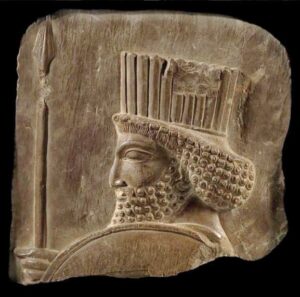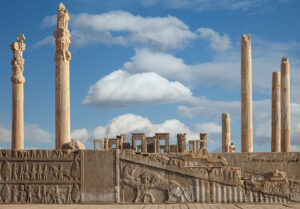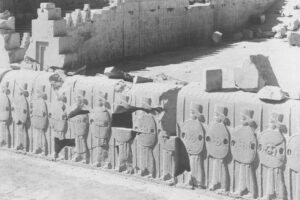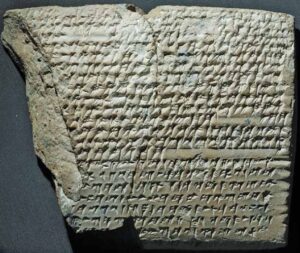Fight to Return Plundered Persian Limestone Relief
 Last month, Assistant District Attorney Matthew Bogdanos petitioned the NY Supreme Court to turn over an Achaemenid limestone bas-relief that had been looted from Iran. Referred to as a “Persian Guard Relief,” the rare object was stolen from Persepolis in 1935. Our founder, Leila A. Amineddoleh, was instrumental in the filing of this case.
Last month, Assistant District Attorney Matthew Bogdanos petitioned the NY Supreme Court to turn over an Achaemenid limestone bas-relief that had been looted from Iran. Referred to as a “Persian Guard Relief,” the rare object was stolen from Persepolis in 1935. Our founder, Leila A. Amineddoleh, was instrumental in the filing of this case.
Persepolis, in current day Iran, is one of the world’s most treasured historical sites, with its name derived from Greek, meaning “Persian city.” Persepolis is considered by UNESCO to have “outstanding universal value.” UNESCO describes Persepolis as “magnificent ruins…among the world’s greatest archaeological sites… among the archaeological sites which have no equivalent and which bear unique witness to a most ancient civilization.” In 1931 excavations were begun at the site, and UNESCO declared the ruins a World Heritage Site in 1979.

Persepolis
© BornaMir/iStock.com
The ancient city, dating back to at least 515 B.C., was the capital of the Achaemenid Empire. Persepolis was built in terraces up from the river Pulwar to rise on a larger terrace of over 125,000 square feet, partly cut from a mountain. Darius I began construction of the site, and it developed until the Greeks plundered and razed the city under the leadership of Alexander the Great in 333 BC (purportedly in retribution for the destruction of the Parthenon by the Persians in 480 BC). The city was widely known as spectacular and breath-taking. As part of the site, Darius I built a palace known as the “Apadana,” used for official audiences. The looted relief at issue was stolen from this great hall.
The looted limestone bas-relief was stolen from Persepolis in 1935, during official excavations completed by the Oriental Institute at the University of Chicago. Authorities were alerted to the theft, and the Iranian government attempted to find and recover the piece, but it disappeared and entered the global black market, eventually making its way into a Canadian museum. Decades later, it was stolen from the museum, recovered, and then appeared at TEFAF in New York in the fall of 2017. At that point, the work was seized by the NY District Attorney’s Office after they learned of the work’s illicit origins. Our founder, Leila Amineddoleh, had informed authorities about the piece after learning about its plundered past by Dr. Lindsey Allen, Lecturer in Greek & Near Eastern History at King’s College in London. As the result of several years examining fragmentary reliefs from the site in museums around the world, and searching archives for their histories, Dr. Allen suspected the relief was looted. When Wace exported the relief for TEFAF, Dr. Allen contacted Ms. Amineddoleh, and explained why she thought the work was stolen.
Iran safeguards Persepolis due to its historic significance. In fact, Iran protects all of its cultural heritage, with the nation’s first patrimony laws passing in 1930. Because of these laws, there is no way that the relief left Iran legally, absent permission from the cultural ministry. Ms. Amineddoleh served as an expert to the District Attorney’s Office in advising on the relevant cultural heritage laws.

The eastern stairs at the Apadana in 1933.
(Photo: The Oriental Institute of University of Chicago, Photo 23188/ Neg.Nr. 12822
https://oi-idb.uchicago.edu/id/bec348b2-7e3c-49fd-8fd6-e9f057c92c4e)
The District Attorney’s Office submitted its turnover request on May 24 (read the document HERE: 18-05-24 PGR Motion for Turnover-reduced), but the case may carry on for some time. The limestone relief, part of an historical complex, has significance not only to the people of Iran, but to archaeologists and classicists, and to anyone visiting Iran’s most celebrated archaeological site. The limestone relief’s theft from Persepolis was tragic and damaging to the site, and hopefully the limestone guard will return to his home protecting the ancient site. The guards are designed to work in the site as a collective, not as individuals. Their fragmentation removes their context, and high-profile sales make other Achaemenid ruins potentially vulnerable to plunder.
